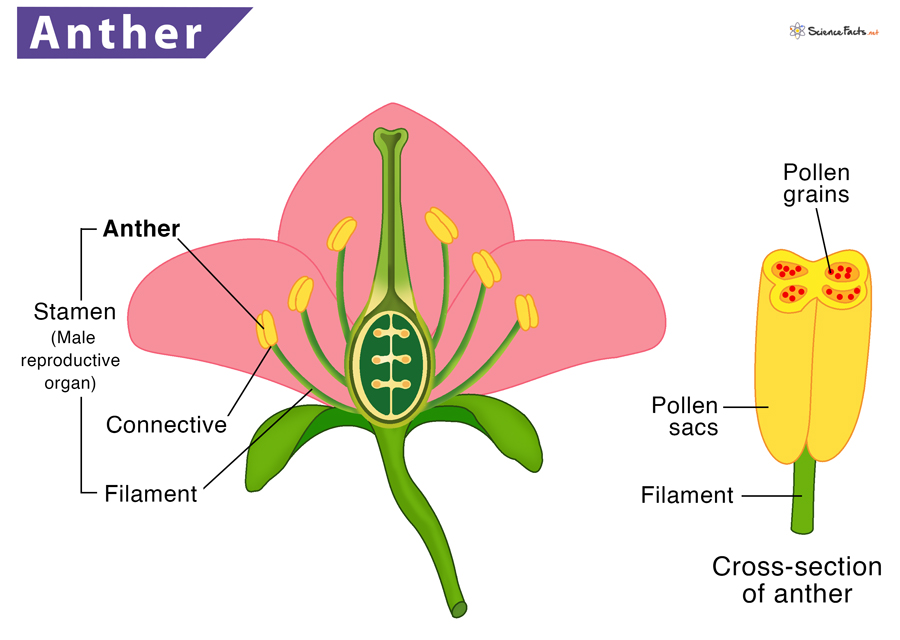Structure
Anther Attachment
Function
Each theca contains two microsporangia or pollen sacs, which fuse to form a chamber called locule. Pollen grains are produced inside these pollen sacs. Most of the flowers are dithecal, having two thecae and four microsporangia. However, few plants, mainly those belonging to the families Cannaceae (canna-lily) and Malvaceae (mallow), are monothecal, having a single theca and two microsporangia. Pollen Development The microsporangia of anther contain microspore mother cells, surrounded by a tissue layer, called the tapetum. While the anther develops, the microspore mother cells undergo meiosis, which divides the mother cell into four haploid microspores. The haploid microspores undergo mitotic division to form a mature pollen grain. All these types of anther attachment can be either versatile or fixed. Versatile attachments mean that the anther can swing freely over the filament when touched by a pollinator, with passing breeze or water flow. These anthers may facilitate the transfer of pollen more efficiently. Grasses and eucalyptus have versatile anther attachment.
